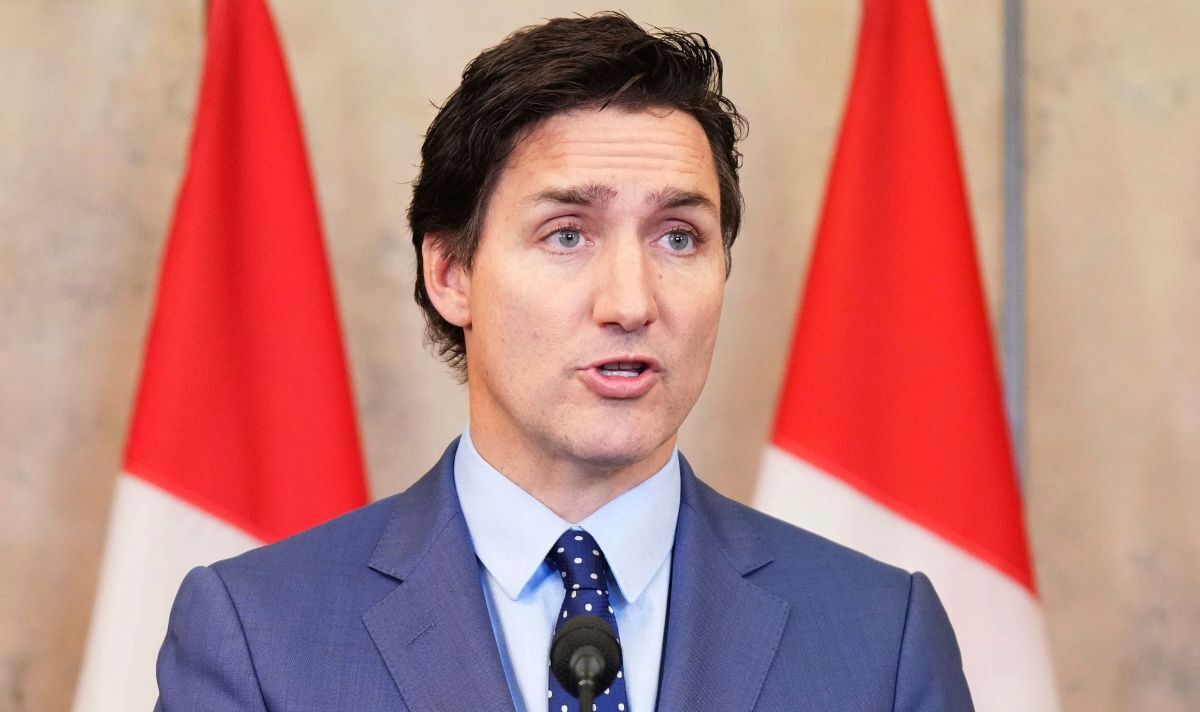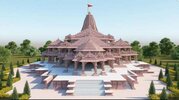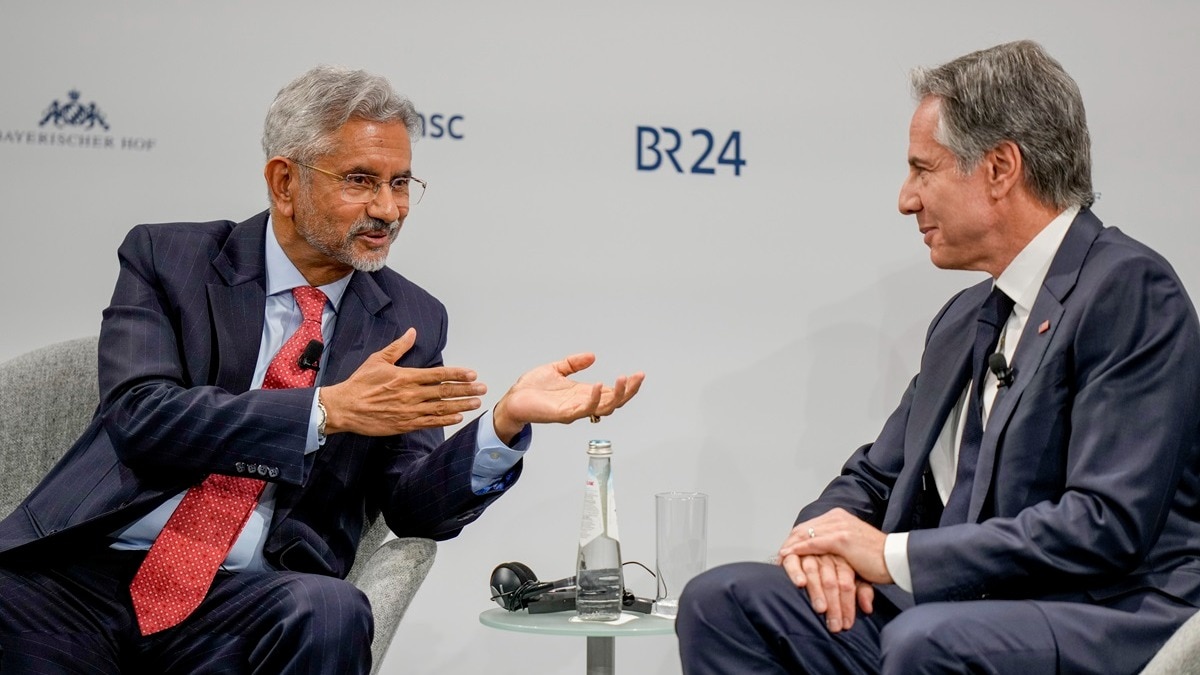It was October 30, 1990, a day India will never forget. An iconic photo from that historic day of the Ram Mandir movement has returned to our collective memory as
the country prepares for the 'Pran Pratishtha' (consecration) ceremony of Lord Ram's idol at Ayodhya on January 22.
Around 28,000 personnel of the Uttar Pradesh Armed Constabulary were deployed in Ayodhya on October 30, 1990, to thwart the Ram Mandir 'Kar seva' organised by the Vishwa Hindu Parishad (VHP).
...
The entire road to the Babri Masjid was barricaded, with a sea of armed khaki-clad men securing it.
"Amid the struggle between the karsevaks and the security personnel, a sadhu who knew how to drive a bus jumped onto the seat of a police bus that was used to detain some karsevaks," Swami Vigyananand, Joint General Secretary of the Vishva Hindu Parishad, tells IndiaToday.in.
Calling it a "watershed moment", Swami Vigyananand says, "The sadhu ploughed through the barricades and opened the road for hundreds of karsevaks."
"Karsevaks braved hundreds of security personnel and trooped towards the disputed Babri Masjid. Some of them managed to climb on the dome of the disputed structure and planted '
Bhagwa Dhwaj' (saffron flags)," says Swami Vigyananand.
The security personnel deputed there soon began lathi-charging and shooting at the karsevaks.
"Facing the offensive by the security personnel, the karsevaks were forced to retreat by the evening," says Swami Vigyananand.
Officials wanted the saffron flags removed from the domes but were faced with a unique situation.
"They found that a monkey had taken position on the middle dome of the mosque. The police personnel saw the monkey as an avatar of Lord Hanuman who had appeared to protect the flag. They were unwilling to disturb it," he says.
"The monkey kept sitting near the flag for hours. Late at night, after the monkey left the dome, three-four jawans climbed atop the dome and removed the flag," says Swami Vigyananand.
{My comment: It could be that Monkey got scared of the crowd and police with sticks went to the highest place visible and sat there, but people interpreted it is avatar of Lord Hanuman. It is same miracle theme repeating over and over in this entire saga, whenever one is in a fix }
he VHP functionary shared with IndiaToday.in the iconic image of the monkey atop the dome, which was carried by several Hindi newspapers on November 1, 1990.
Though official records say 20 people were killed in the
police firing ordered by Mulayam Singh Yadav on October 30 and November 2, eyewitness accounts put the number at scores. An Ayodhya-based journalist who has documented the attack on karsevaks says that the volunteers were fired upon even from a helicopter.
There has been recurring imagery of the monkey (a symbol of Hanuman) in the entire Ram Mandir movement.
Another photo from India Today's archives takes the story further. This photo is from July 23, 1992, and clicked by Pramod Pushkarna.
'Kar sewa' for the Mandir was suspended after the brutal killings of the karsevaks and initiated in July 1992. Though karsevaks reached Ayodhya, the programme was postponed, says Swami Vigyananand.
The 1992 photo also shows a monkey sitting on the central dome of the Babri Masjid.
"
I was intrigued that while security personnel and barricades prevented people from reaching the disputed spot, a monkey had reached the top of the dome," Pramod Pushkarna tells IndiaToday.in, when asked what made him take that photo.
Photojournalist Pramod Pushkarna, now 76, says he made several trips to Ayodhya during the Ram Mandir Movement days. He says people were calling the monkey “Hanuman
ka avatar”.
“There were a lot of restrictions in Ayodhya then. We used to hide behind buildings or climb onto roofs to take photographs. That was the time Ayodhya Movement was on full steam,” says Pushkarna.
He also recalls the time when a group of journalists rescued and took a bleeding Ashok Singhal, then VHP Working President, to hospital. Singhal was badly injured in the police lathi charge on karsevaks.
MONKEY INSPIRED OPENING OF TEMPLE DOORS
The reference to monkeys in the Ayodhya Mandir case can also be found in the autobiography of KM Pandey, who, as the Faizabad district judge on February 1, 1986, ordered that the doors of the Babri Masjid be opened for devotees to the ‘darshan’ of Ram Lalla idol.
In his autobiography ‘Voice of Conscience, published in the 1990s, Pandey mentions a “divine power” behind his judgment.
“On the date of the order when orders for opening locks were passed, a Black Monkey was sitting for the whole day on the roof of the court room in which the hearing was going on, holding the flag-post. Thousands of people of Faizabad and Ayodhya who were present to hear the final orders of the court had offered him groundnuts and various fruits. Strangely, the said Monkey did not touch any of the offerings and left the place when the final order was passed at 4.40 pm,” writes Pandey.
“The District Magistrate and SSP escorted me to my bungalow. The said monkey was present in the verandah of my bungalow. I was surprised to see him. I just saluted him, treating him to be some divine power,” he writes in ‘Voice of Conscience’.
KM Pandey’s order to unlock the doors of Babri Masjid was overturned by the High Court. It was to be part of a lengthy legal process that started with an FIR in 1858 after
Nihang Sikhs barged into the disputed mosque and performed a ‘havan’.
MONKEYS AND SUPREME COURT VERDICT
Senior advocate and former attorney general K Parasaran, who successfully argued the case for Ram Lalla Virajman, also talked about monkeys in a video in reference to the Ram Janmabhoomi case.
The five-judge bench of the Supreme Court delivered the landmark verdict, ordering the 2.77 acres of land to be handed over to a Ram Janmabhoomi trust for the construction of a Ram temple, on November 9, 2019.
K Parasaran said the verdict was delivered on a Saturday and on the subsequent Monday, 30–40 monkeys appeared from nowhere on the terrace of his residence in Delhi.
“I was out on the open terrace on the second floor, about 30 or 40 monkeys came. Can't imagine so many monkeys, and that too at 8.45 PM,” says Parasaran.
"And they were playing, jumping, kicking.... Lord Ram took care of it... 69 years he waited for it," says Parasaran.
Monkeys have been perceived by devotees throughout the Ram Mandir movement as a manifestation of the divine. The iconic October 1990 image of the monkey, splashed across newspapers, was one in that thread




 . So all the opposition politicians struggling their own way to project as Hindu supporters as the parliamentary elections are around the corner.
. So all the opposition politicians struggling their own way to project as Hindu supporters as the parliamentary elections are around the corner.
